By November, I had assumed that our annual grass cuts had been completed, with our green hay spread, our seeds sown and our plugs planted. So surely it was time to put away the rakes and let them lay dormant until called upon in the Spring. Well, it appeared not, as there was one final grass that had to be attended to – the common reed Phragmites australis.
Reed beds are early successional wetlands that are formed by stands of one plant, the common reed. They tend to occur in open areas of freshwater and ditches, whilst also establishing themselves in brackish and tidal water, such as estuaries. Once the reed has colonised open water, plant litter gradually builds up, resulting in the drying of the habitat. Consequently, overtime these areas undergo natural succession from reed bed, to scrub, to woodland. Therefore, if we want to maintain a reed bed and its ecological and conservation value, then active management is essential. But what is the conservation significance of a reed bed?
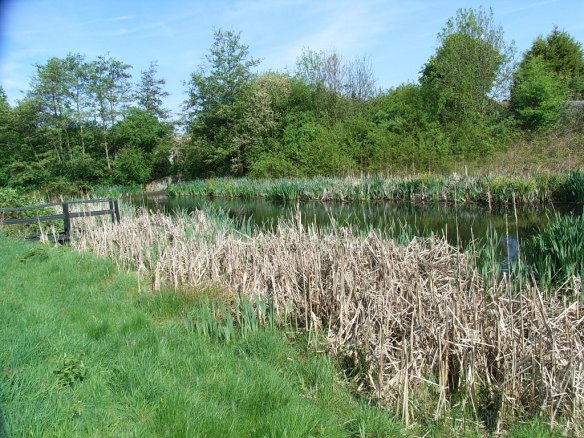
Anton Crescent Wetland – A site with various habitats, including reed bed.
These habitats are among the most important areas for a number of Britain’s resident and migratory bird species. They support a distinctive assemblage of specialist species (meaning that they are entirely or largely dependent on this this habitat) including the; bittern Botaurus stellaris, bearded tit Panurus biarmicus, marsh harrier Circus aeruginosus, Savi’s warbler Locustella luscinioides, Cetti’s warbler Cettia cetti and the crane Grus grus – all of which are currently nationally rare, Red Data Birds. Further to this, reed beds provide roosting habitats for a number of our overwintering wildfowl and wading birds, whilst common reed seed provides a valuable food source for a number of our resident passerine species during the winter. Clearly, the diversity of rare avifauna associated with reed bed is extensive, which suggests why conservation of these habitats is so important.
As well as birds, British reed beds provides habitat for a number of globally rare invertebrates. Species including the reed leopard moth Phramataecia castanaea, a rove beetle Lathrobium rufipenne, and the swallowtail butterfly Papilio machaon are all closely associated with reed bed conform to the GB Red Data Book and the IUCN red list. In addition, 40 species are known to feed exclusively on reed, whilst a wide range of invertebrates are strongly associated with reed, even if they do not feed directly upon it (i.e. spiders, who use it to spin their webs).
Unfortunately, across the UK, it has been estimated that up to 40% of reed bed habitats were lost between 1945 and 1990, predominantly through dredging for agriculture, deeming it a nationally scarce habitat. As a result, reed beds are considered a priority habitat for conservation in the UK Biodiversity Action Plan. Therefore, in Sutton, it is critical that we manage our small areas of reed bed effectively. But how do we do this?
Our main area of reed bed is at Anton Crescent Wetland, where the SNCV have been involved with management work on the site since 1989. Much of this work involves halting the natural succession of scrub and tree species – typically willow carr, brambles and nettles – thus ensuring that the common reed is the dominant feature of the wetland area.
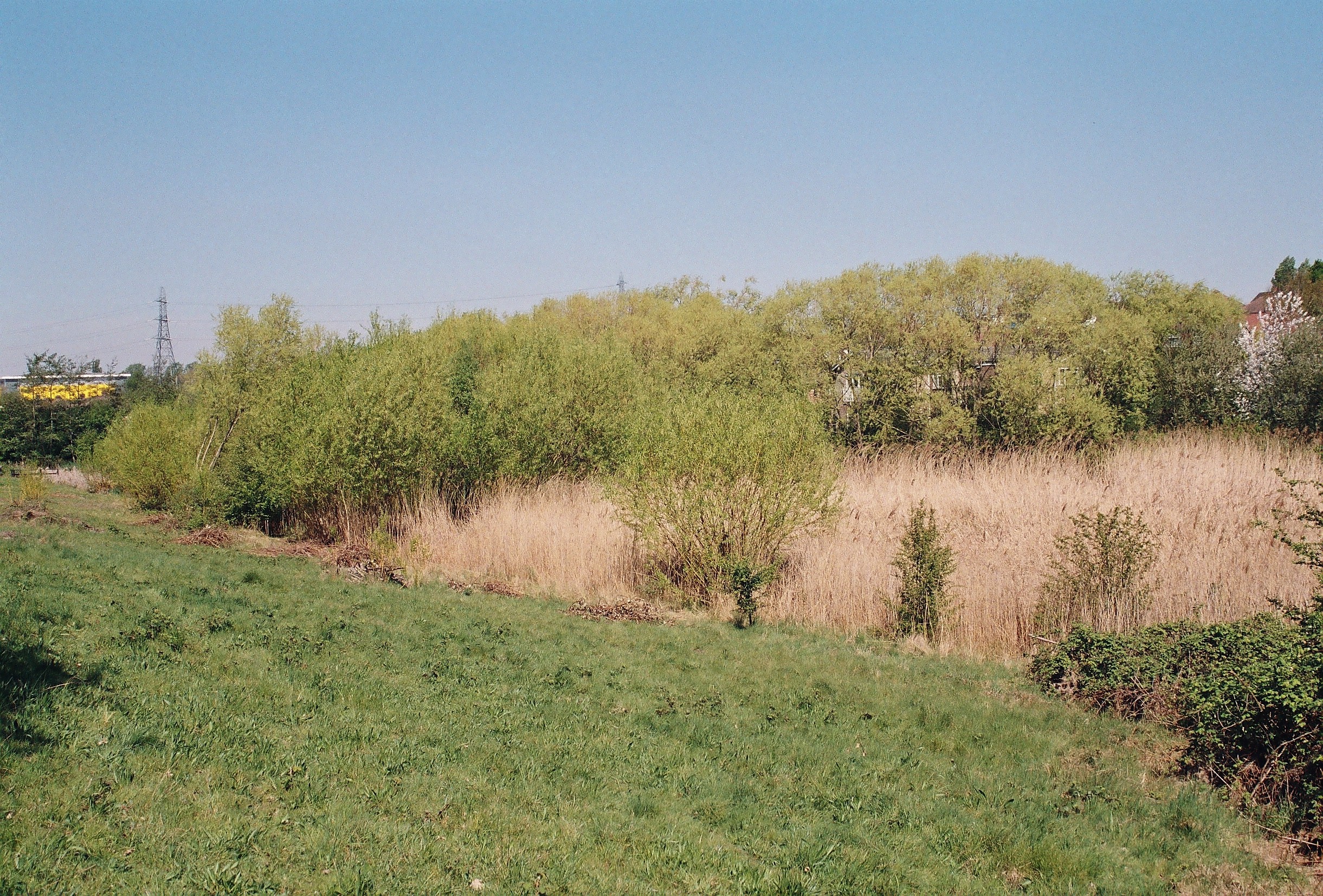
Anton Crescent Wetland – This picture shows the various habitats on offer at ACW. In the foreground we have the grassland, which we have spent time on plug planting, in order to improve the botanical diversity. The reed bed and willow carr dominate, while in the bottom right we have the areas of scrub.
According the RSPB’s extensive report on reed bed management – “Bringing Reedbeds to Life: creating and managing reedbeds for wildlife”, there is a clear method that increases the potential of improving the site for wildlife. The report states that:
- older, drier parts of the reed bed support the highest overall invertebrate diversity and many invertebrates of conservation importance
- early successional reed beds are essential for specialist invertebrate reed bed/wetland species
- temporal and spatial variation in the habitat is key to maintaining and providing high flora and fauna diversity
Moreover, the reports suggests that by creating a heterogeneous reed bed, i.e. one that supports a structural diversity of reed of different ages and heights, the chances of improving the site for wildlife are greatly increased. Heterogeneity increases the diversity and availability of foraging, breeding, nesting and roosting resources, that can potentially host a range of species, thus improving the site for wildlife.
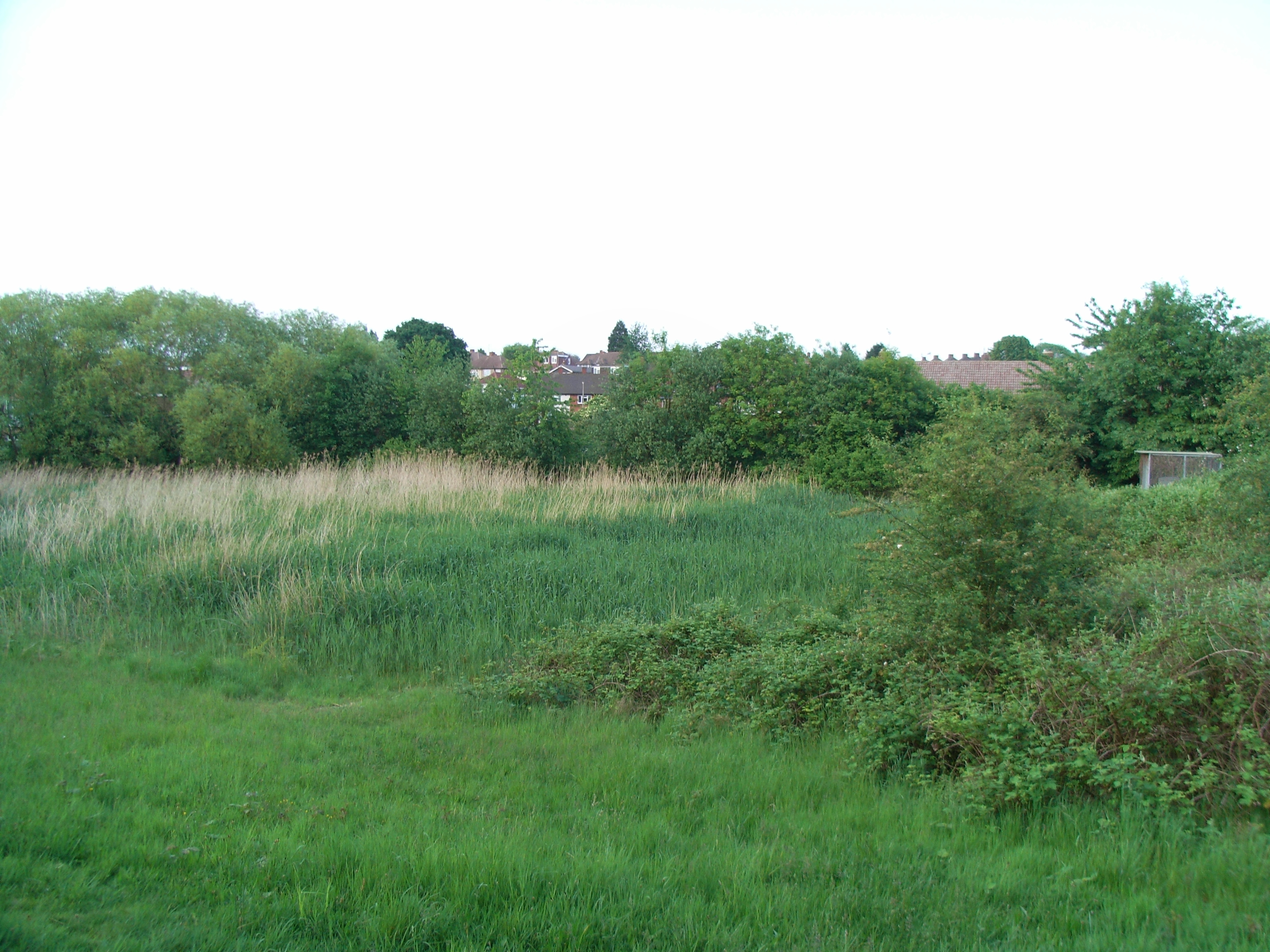
Anton Crescent Wetland – This picture highlights the structural heterogeneity of the reed bed. In the middle left we have the mature reed (light brown patches). In the centre, the area of dark green is the young reed growth, which would have been cut back the previous autumn. The varying height structure and stages of growth are what we are looking for with our reed bed management.
In order to achieve this, under the guidance of Sutton’s Biodiversity Team, the SNCV carry out an annual rotational cutting regime of the reed. This involves selecting a patch of reed bed, scything down the reed and collecting the arisings. If left, nutrient enrichment will favour the growth of scrub species, while decomposition will also lead to the drying of the site.
Over the years, Anton Crescent Wetland has attracted a diversity of wetland birds uncommon in London, such as the water rail Rallus aqauticus, reed and sedge warblers (Acrocephalus scirpaceus and Acrocephalus schoenobaenus), reed bunting Emberiza shoeniclus, the over wintering green sandpiper Tringa ochropus and common snipe Gallinago gallinago. Importantly, these species prefer different stages of reed growth for survival. The water rail, for example, prefers shallow areas of open water for foraging, surrounded by dense reed beds for nesting and breeding. While the snipe, a cryptic wader, requires areas of 10-30cm tussocky vegetation for nesting and dense stands around muddy polls, so they can probe on the water’s open edge for foraging but then swiftly blend in with the vegetation when necessary . Further still, the areas of bramble and the reed bed provide lots of cover and feeding opportunities for small perching birds. House sparrows (Passer domesticus), great tits (Parus major) and blue tits (Parus caeruleus) are common visitors to the site. In the winter months, charms’ of gold finch Carduelis carduelis and long-tailed tit (Aegithalos caudatus) families chirp away harmoniously. Evidently, providing structural diversity and various stages of reed bed growth is attracting numerous bird species to our wetland site.
- Green sandpiper © Peter Alfrey
- Snipe © Peter Alfrey
- Long-tailed tit © Peter Alfrey
Thanks to the fantastic effort (reed removal is a particularly tough task, with endless scything, wading through water and shifting great quantities of reed) of the SNCV, we are able to support these species, and it is hoped, that with our current management we will continue to discover more species within our reed beds.
Unfortunately, Anton Crescent Wetland is closed to the public. Though, withinthe M25 there are plenty of reed bed habitats, with sightings of bitterns being recorded in London every year since 1990! Other exciting reed bed visitors include the otter Lutra lutra, so it is worth exploring London to see these flagship species! For a list of London sights, click here. London Wetland Centre and Rainham Marshes are certainly worthwhile days out. Also, Beddington Farmlands Bird Group offer open days to the public and always see exciting and regionally rare birds on their wetland site. There’s plenty out there to explore and see! Alternatively, if you’d like to help with the volunteer task days please get in touch at: sncvvolunteers@hotmail.co.uk.



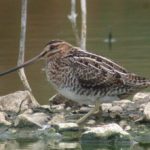
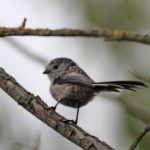






1 Pingback